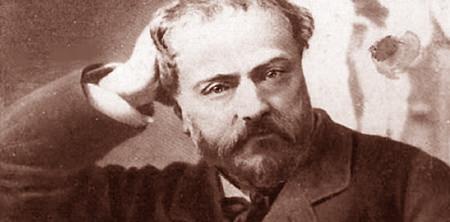
I wonder whether you recall that court case involving the song My Sweet Lord supposedly by George Harrison. The song came out in 1971 and bore striking similarities to He’s So Fine recorded nine years earlier by a female group from New York called The Chiffons.
By the time the Harrison song was released, The Chiffons were under the Bright Tunes Music Corporation which swiftly filed a lawsuit against George Harrison. The case was finally heard in court in February 1976 when Harrison’s lawyers tried to prove that the songs were different. The judge decided otherwise. Harrison was found guilty of “subconscious plagiarism” and fined $587,000.
In contrast, the Church of the Middle Ages regularly re-used melodies because it was the standard way of creating new works. One process, known as “troping” was to extend an existing musical setting of sacred verses by simply adding more material. There was no conception of music being a commodity, having monetary value or even having an owner.
The first British copyright laws date from 1709, though they were probably interpreted somewhat liberally. Nevertheless, the German composer and theorist Johann Mattheson claimed in 1739 that “borrowing was acceptable and necessary”. However, he added that “one must so construct and develop imitations that they are prettier and better than the pieces from which they are derived.” Clearly, Mattheson had no scruples about using someone else’s music. His father was a successful tax-collector, which may have had something to do with it.
Bach, Handel, and most other professional composers of the day routinely recycled their own music and the music of others. Bach’s Anna Magdalena Notebook of 1725 contained short pieces written for his wife, but many of them were borrowed. The Minuet in G for example, was actually written by Christian Petzold. Over two hundred later it was borrowed again for a song called A Lover’s Concerto and sung by another female group from New York called The Toys.
Both Haydn and Mozart borrowed music freely. Not until 1909 was it realised that Mozart’s Symphony No. 37 was actually a re-working of Michael Haydn’s Symphony No 25. The idea of the composer as a singular genius forging an original path was virtually unknown to seventeenth and eighteenth century sensibilities. It’s been estimated that Beethoven reworked existing music in more than a third of his compositions.
The 1911 musical Kismet used music written by Alexander Borodin who had died twenty-four years earlier. You may recall the songs Baubles, Bangles and Beads and the more well-known Stranger in Paradise, both of which were revived in the 1950s. There are dozens of other examples. The song Hot Diggity was recorded in 1956 by one Pierino Ronald Como better known as Perry, except perhaps to his mother. The song went to the top of the charts and while the words were nonsense, the melody was wonderful. As you may have guessed, it was stolen.
Emmanuel Chabrier (1841-1894): España. BBC symphony Orchestra cond. Leonard Slatkin (Duration 06:25; Video Resolution: 360p)
Chabrier went on a tour of Spain in 1882 and wrote España a year later. The work isn’t all flamenco and castanets as you might expect, nor is it descriptive music in the usual sense. I think Chabrier was more interested in creating something more impressionistic, reflecting the exuberance and colour of Spanish life. He was after all, close friends of the Impressionist painters Claude Monet and Édouard Manet.
The orchestration is sizzling and brilliant and the work exudes tremendous gaiety with an unmistakable Spanish flavour. The trouble is, every time I hear the main tune, I can’t get the idiotic words of Hot Diggity out of my head.
The words of another Perry Como hit, Catch a Falling Star weren’t a great deal more sensible. They suggested that you should “catch a falling star and put it in your pocket”, which I would have thought would be the last place you’d want to place a red-hot meteorite. This time though, the music had been stolen from Brahms.
Johannes Brahms (1833-1897): Academic Festival Overture. Nederlands Studenten Orkest 2012, cond. Lucas Vis (Duration 11:41; Video Resolution: 1080p HD)
In a twist of delicious irony, Brahms had also stolen the tune. He composed the Academic Festival Overture during the summer of 1880 as a token of gratitude to the University of Breslau, which had awarded him an honorary doctorate degree. The dull-sounding title belies the fact that this is a very jolly piece indeed, composed largely of student drinking songs.
The work is scored for large orchestra and Brahms conducted the premiere for a delighted audience in 1881. It’s full of memorable tunes, ending with a thunderous rendering of the popular academic song Gaudeamus Igitur. The words of this song poke fun at academia and they probably appealed to the composer’s dry sense of humour.
And in case you’re wondering, George Harrison did pay the fine. Being one of the Beatles, he could probably afford such a modest sum.
 |
 |
 |





